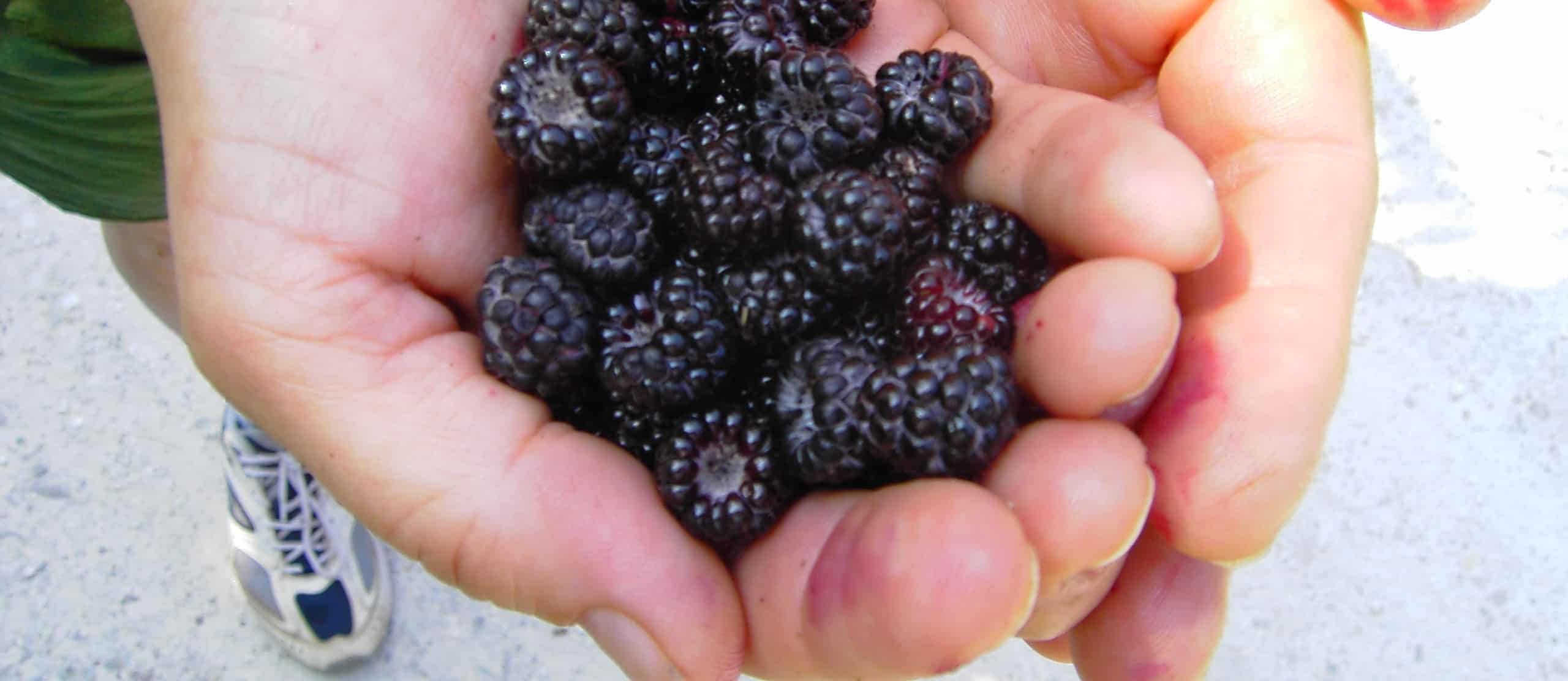The burning sensation during strenuous exercise may be related to the build-up of lactic acid in our muscles (see Reducing Muscle Fatigue with Citrus), but that’s different than the delayed onset muscle soreness that occurs in the days following a bout of extreme physical activity. This post-exercise soreness is thought to be due to inflammation caused by muscle cell damage (little micro-tears in the muscle).
If it’s an inflammatory reaction, then might anti-inflammatory phytonutrients help? The bioflavonoids in citrus might help with the lactic acid buildup, but we may need to ramp up to the anthocyanin flavonoids in berries to deal with the inflammation.
We know, for example, that if we eat about 45 cherries a day we can significantly reduce the levels of inflammatory markers like c-reactive protein in our bloodstream. Mushrooms (Boosting Immunity While Reducing Inflammation), nuts (Fighting Inflammation in a Nut Shell), and purple potatoes (Anti-Inflammatory Effects of Purple Potatoes) may also reduce inflammation (along with plant foods in general, see Anti-Inflammatory Antioxidants) so much so that plant-based diets can be used to treat inflammatory conditions. See, for example, Dietary Treatment of Crohn’s Disease, and Potassium and Autoimmune Disease. Animal products on the other hand, may increase inflammation through a variety of mechanisms, including endotoxins (How Does Meat Cause Inflammation?), arachidonic acid (Chicken, Eggs, and Inflammation), and Neu5Gc (The Inflammatory Meat Molecule Neu5Gc).
But what about reducing muscle soreness?
Researchers took some guys and made them flex their biceps against way too much weight over and over and over again, the next day the strength in their arms is way down—about a 30% drop—and they suffered serous soreness (See Reducing Muscle Soreness with Berries). But if they were drinking some cherry juice, their arms ended up hurting less and they were able to better preserve their strength. Why not just feed them cherries? Because we can’t do a placebo group since we can’t really create a convincing fake cherry, but we can make fake cherry juice in the form of cherry Kool-Aid.
This was “the first study to examine the effect of the consumption of any cherry product on the symptoms of exercise induced muscle damage,” and it seemed to work. Follow-up studies show it also works on reducing muscle pain in long-distance runners, speeding recovery after a marathon, considered “the holy grail of exercise science.”
A similar study showing anti-inflammatory effects of eating blueberries took it a step further and actually paid athletes to take a muscle biopsy so they could see what’s happening to their muscles on a microscopic level. It’s like another study which showed how massage could decrease inflammation. At first I was like: “ooh, I wouldn’t mind being part of that study—free relaxing massage!” until I read the protocol: subjects got to rest a few minutes, then the scalpels come out and cut out some muscle samples. No thanks.
And of course there are drugs—there are always drugs—but with drugs there are side effects. So the cherry study, as noted in an editorial comment, “may provide more of a sensible and realistic treatment option for those suffering from sore and damaged muscles. The scientific question of how to treat the damaged muscle is an important one, and these researchers should be applauded for finding a potential treatment that is not only practical, but one that can be enjoyed.”
How about improving athletic performance more directly? See my video series on performance-enhancing vegetables described in my blog Using Greens to Improve Athletic Performance.
-Michael Greger, M.D.
PS: If you haven’t yet, you can subscribe to my videos for free by clicking here and watch my full 2012 – 2015 presentations Uprooting the Leading Causes of Death, More than an Apple a Day, From Table to Able, and Food as Medicine.
